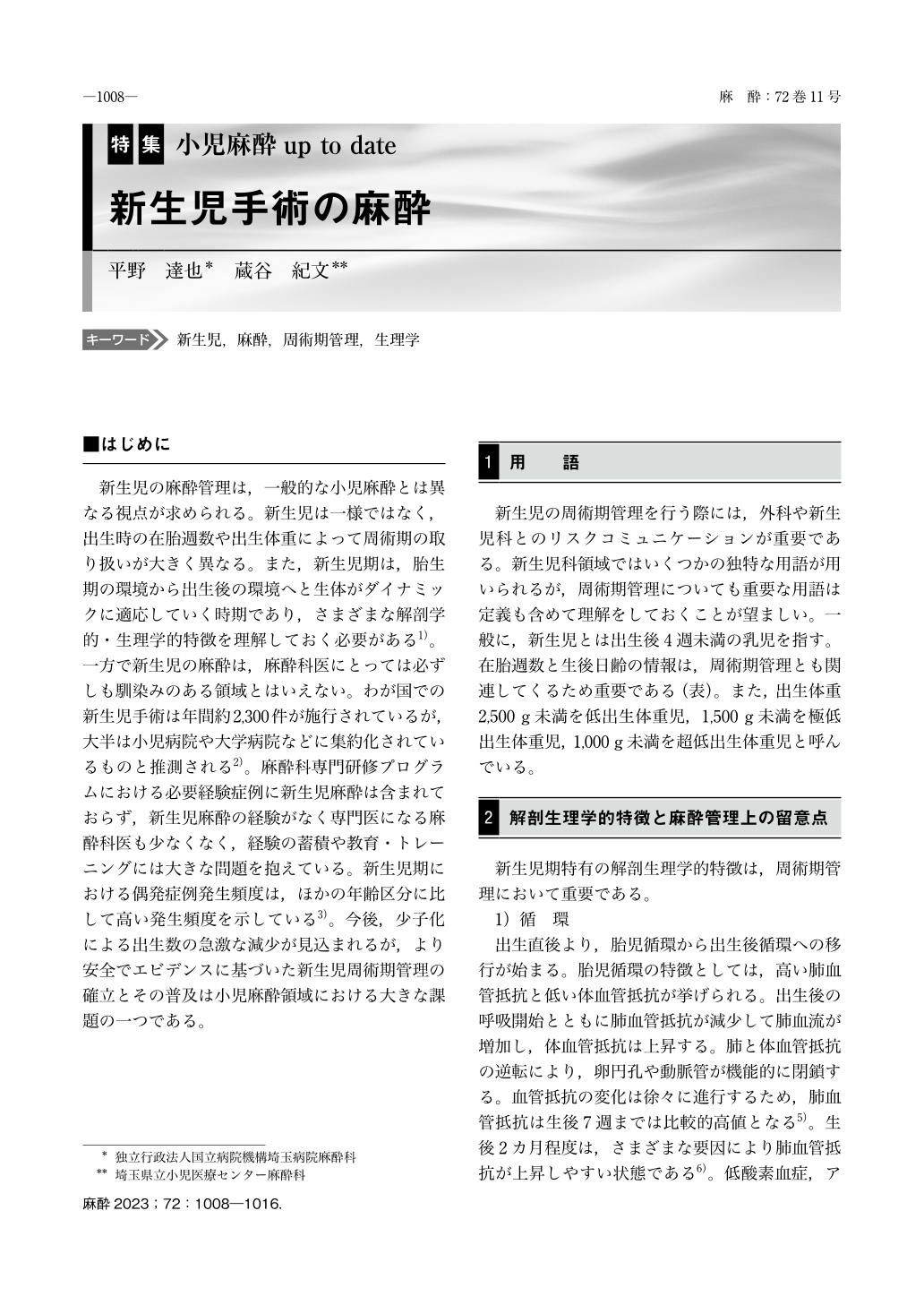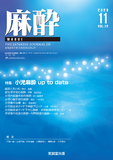Japanese
English
- 有料閲覧
- Abstract 文献概要
- 1ページ目 Look Inside
- 参考文献 Reference
はじめに
新生児の麻酔管理は,一般的な小児麻酔とは異なる視点が求められる。新生児は一様ではなく,出生時の在胎週数や出生体重によって周術期の取り扱いが大きく異なる。また,新生児期は,胎生期の環境から出生後の環境へと生体がダイナミックに適応していく時期であり,さまざまな解剖学的・生理学的特徴を理解しておく必要がある1)。一方で新生児の麻酔は,麻酔科医にとっては必ずしも馴染みのある領域とはいえない。わが国での新生児手術は年間約2,300件が施行されているが,大半は小児病院や大学病院などに集約化されているものと推測される2)。麻酔科専門研修プログラムにおける必要経験症例に新生児麻酔は含まれておらず,新生児麻酔の経験がなく専門医になる麻酔科医も少なくなく,経験の蓄積や教育・トレーニングには大きな問題を抱えている。新生児期における偶発症例発生頻度は,ほかの年齢区分に比して高い発生頻度を示している3)。今後,少子化による出生数の急激な減少が見込まれるが,より安全でエビデンスに基づいた新生児周術期管理の確立とその普及は小児麻酔領域における大きな課題の一つである。
The management of neonatal anesthesia presents unique challenges that require a different perspective than that of pediatric anesthesia. Neonates vary significantly based on gestational age and birth weight, and their perioperative handling requires an understanding of their anatomical and physiological characteristics as they adapt to postnatal life. However, neonatal anesthesia is not included in most anesthesiology training programs, leading to a lack of experience and education for many anesthesiologists.
Approximately 2,300 neonatal surgeries are performed in Japan each year, with the majority taking place at children’s hospitals and university hospitals. The Japanese Society of Anesthesiologists’ annual survey found a higher frequency of incident cases in the neonatal period than other age groups. With the declining birth rate in Japan, there is a need to establish safer and evidence-based perioperative management for neonates.
Overall, education, training, and the accumulation of experience are crucial for the safe and effective management of neonatal anesthesia. Improving training programs and promoting the dissemination of best practices can help address these challenges and ensure that neonates receive the best possible perioperative care.

Copyright © 2023 KOKUSEIDO CO., LTD. All Rights Reserved.


